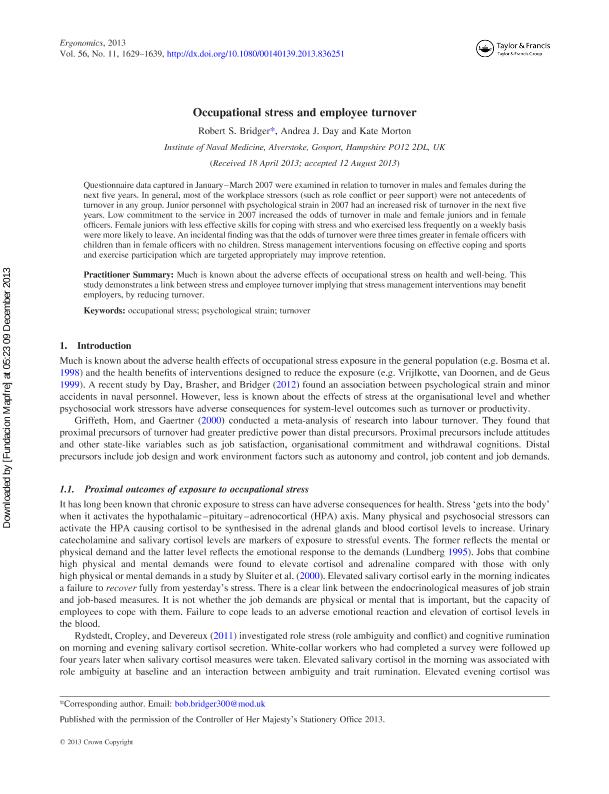Occupational stress and employee turnover

Contenido multimedia no disponible por derechos de autor o por acceso restringido. Contacte con la institución para más información.
| Tag | 1 | 2 | Valor |
|---|---|---|---|
| LDR | 00000cab a2200000 4500 | ||
| 001 | MAP20130041216 | ||
| 003 | MAP | ||
| 005 | 20131210102157.0 | ||
| 008 | 131209e20131104esp|||p |0|||b|spa d | ||
| 040 | $aMAP$bspa$dMAP | ||
| 084 | $a875 | ||
| 100 | $0MAPA20110023669$aBridger, Robert S. | ||
| 245 | 1 | 0 | $aOccupational stress and employee turnover$cRobert S. Bridger, Andrea J. Day, Kate Morton |
| 520 | $aQuestionnaire data captured in JanuaryMarch 2007 were examined in relation to turnover in males and females during the next five years. In general, most of the workplace stressors (such as role conflict or peer support) were not antecedents of turnover in any group. Junior personnel with psychological strain in 2007 had an increased risk of turnover in the next five years. Low commitment to the service in 2007 increased the odds of turnover in male and female juniors and in female officers. Female juniors with less effective skills for coping with stress and who exercised less frequently on a weekly basis were more likely to leave. An incidental finding was that the odds of turnover were three times greater in female officers with children than in female officers with no children. Stress management interventions focusing on effective coping and sports and exercise participation which are targeted appropriately may improve retention. | ||
| 773 | 0 | $wMAP20100019818$tErgonomics : the international journal of research and practice in human factors and ergonomics$dOxon [United Kingdom] : Taylor & Francis, 2010-$x0014-0139$g04/11/2013 Volumen 56 Número 11 - noviembre 2013 |

